Cheap and delicious coffee? The rations of Qianjie coffee are beans.
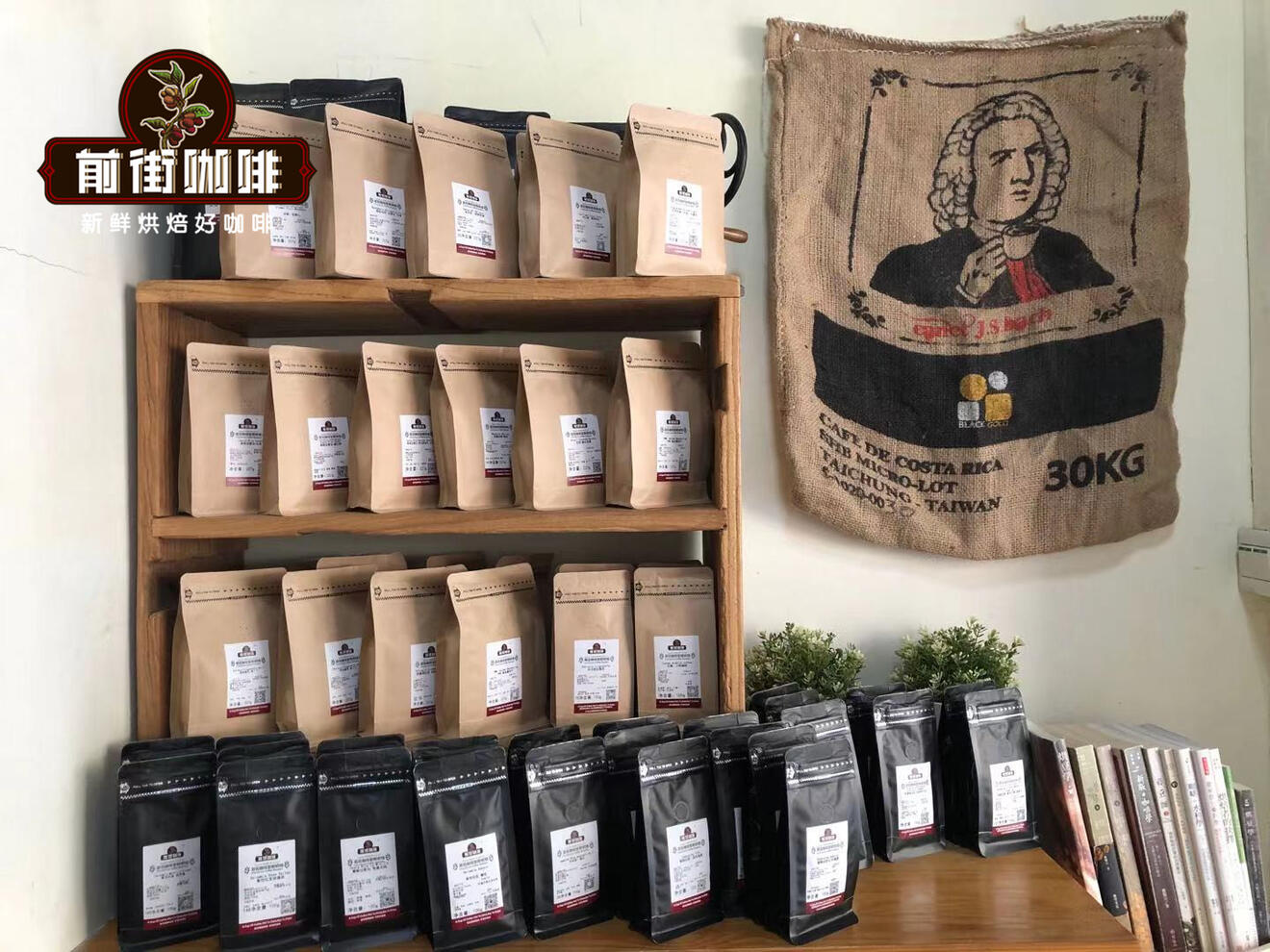
Professional coffee knowledge exchange more coffee bean information please follow the coffee workshop (Wechat official account cafe_style)
Qianjie regularly offers discount activities for the beans of the food rations series, and many old customers know Qianjie because of the rations and beans in Qianjie. Qianjie currently has seven series of rations beans, covering major coffee producing areas, including Esseyega, Brazilian red fruits, Colombian Huilan, Indonesia Manning, Costa Rica Tara beads, Guatemala pico Nanguo and Yunnan small grains of coffee.
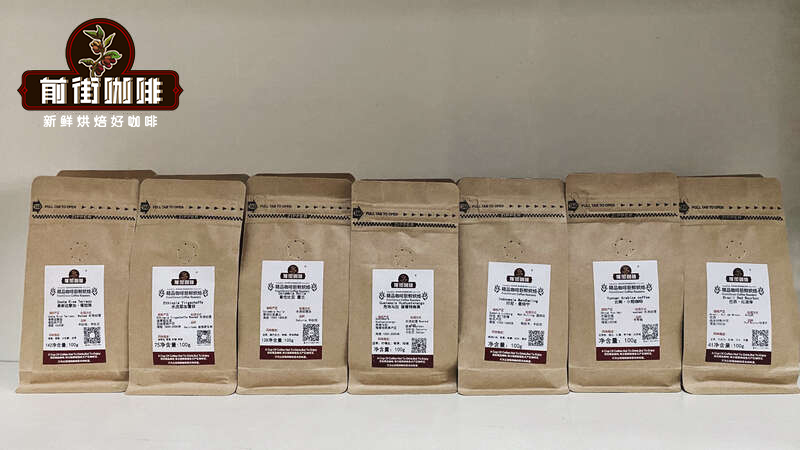
Qianjie food and beans
Many friends who do not know about Qianjie may misunderstand the series of food rations and beans in Qianjie. They may think that the reason why they are called "rations beans" or sometimes the activity price is only 9.9, is it because of the poor quality of coffee beans?
Qianjie food beans are the "facade responsibility" of coffee beans in producing areas, because they are not only coffee beans with higher recognition of basic flavor, but also coffee beans with low price and high performance-to-price ratio.
When choosing a "rations bean" on the shelf, Qianjie coffee will select the beans most representative of the original local flavor in each major producing area, and introduce them to everyone with a taste price of 100g in the packaging. The significance of Qianjie food beans is that people can use low prices to identify the basic flavor of each major producing area, such as Yega's citric acid, Mantenin's herbal flavor, Brazil's Colombian nut chocolate flavor and so on.
Many friends who have just started to choose coffee beans are very confused about choosing coffee beans. They do not know what flavor they are suitable for, and they are also very worried about stepping on thunder. Qianjie thinks that it is most appropriate to choose "rations beans" at this time. Starting with the most classic flavor of several major producing areas, there is no need to spend too much "wrong money" to pull weeds and kill two birds with one stone.
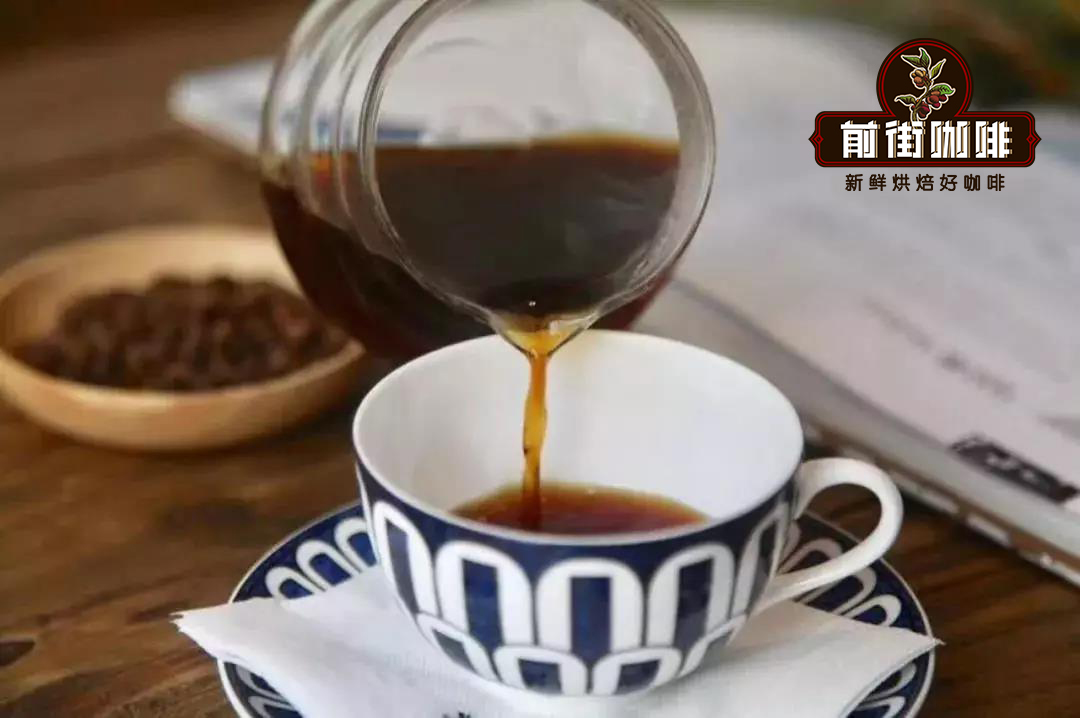
In addition, most of the grain beans in Qianjie are treated with water, because the water washing method is not only the basic flavor of a producing area, but also the beginning of the understanding of the flavor of the producing area. The well-known authentic blue mountain coffee beans in Jamaica are all washed in order to show the most typical flavor of the blue mountain. However, in the near future, there will also be a kind of sun-exposed Blue Mountain coffee beans in Qianjie, which is also an authentic blue mountain coffee bean certified by the Jamaica Coffee Bureau. The reason why the treatment method has been changed is also in line with the development of the coffee market. It's also nice to let people feel the different side of Blue Mountain coffee.
How should coffee rookies choose coffee beans?
In front of the street, guests often ask, "do you have any coffee beans suitable for entry-level coffee?"
If guests do not have any special definition of coffee flavor in the producing area, Qianjie will decisively recommend "Qianjie food beans" in most cases, and Qianjie will launch specific corresponding beans only when guests have a demand for "pursuing a more specific coffee flavor".
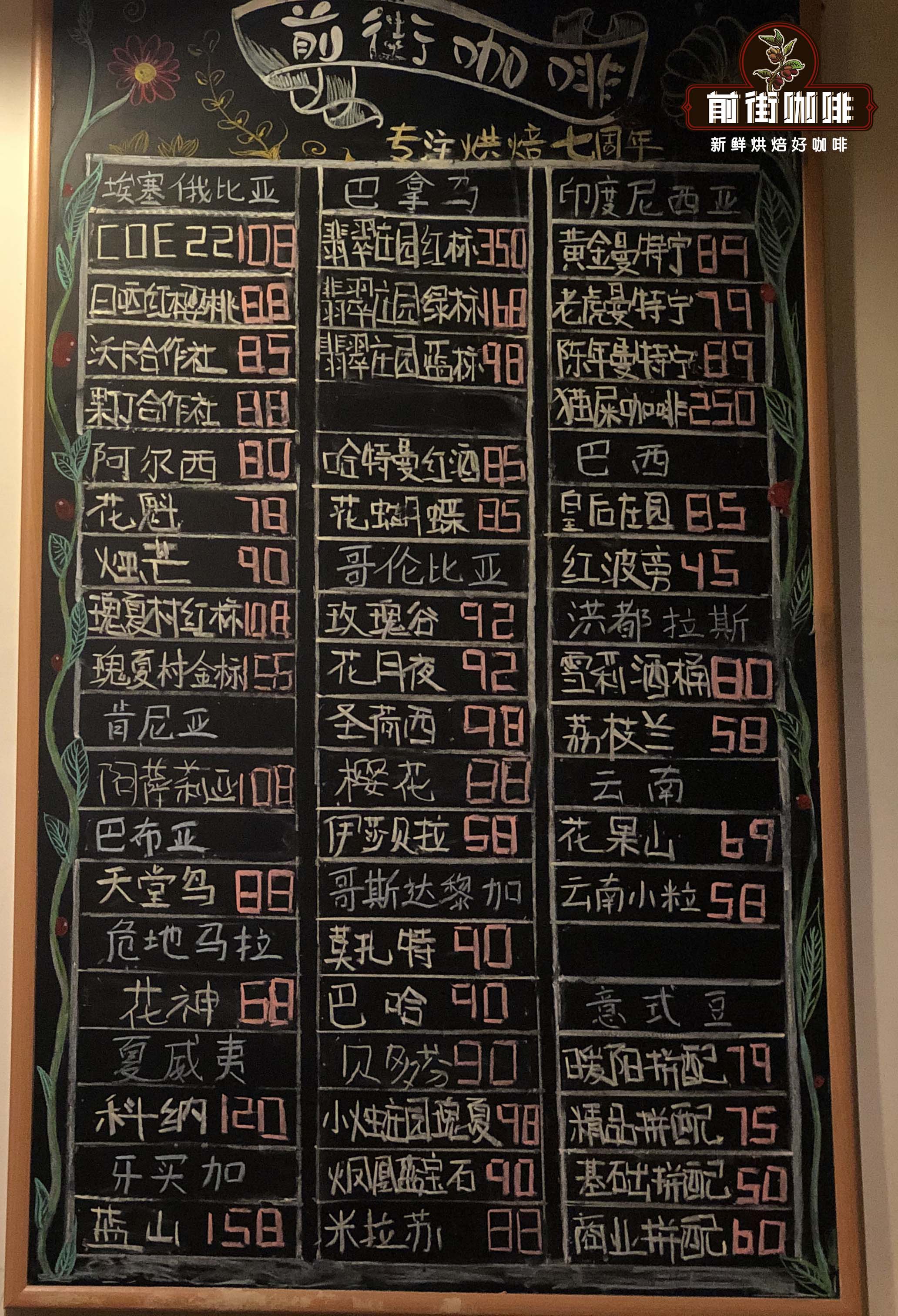
For those who are in initial contact with coffee or are not sure what taste they prefer, Qianjie daily rations of beans can make people drink the main bean flavor of the producing area at a low price, so as to better choose which coffee from the producing area is more suitable for them. at the same time, the study of the flavor type of the producing area is also the best choice.
Next, Qianjie will introduce in detail what are the characteristics of our 7 classic "Qianjie food beans".
[washing Yejia Xuefei grain and beans in front of the street]
Country: Ethiopia
Producing area: Yega Xuefei
Altitude: 1800-2000 m
Variety: native species
Treatment: washing treatment
Flavor: Jasmine, berry, lemon, citrus
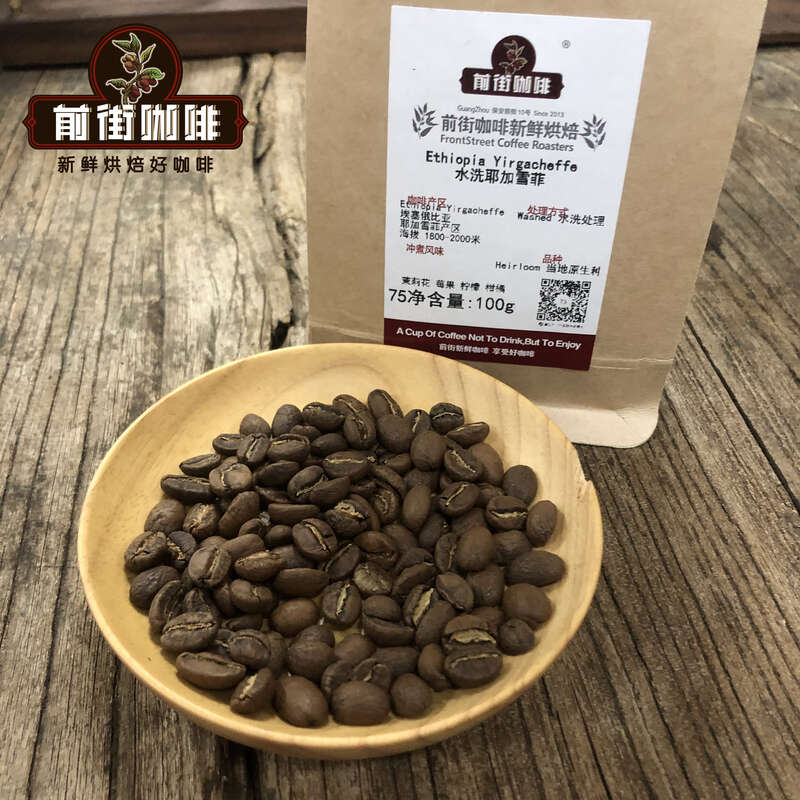
Yirgacheffe is located in the Gedeo region of southern Ethiopia. Due to its unique style and popularity, Yirgacheffe has a unique product classification and occupies a place in the global fine coffee market. Yirgacheffe itself is a small town, adjacent to three small producing areas Wenago, Kochere and Gelena Abaya, because the flavor of coffee produced has greater commonality with Yirgacheffe, so these small producing areas are also divided into Yirgacheffe producing areas.
The coffee trees of Yegashefi were originally planted by European monks, but later by farmers or cooperatives. Coffee trees are mostly planted in farmers 'backyards or mixed with other crops in the field. The yield per household is not much. It is a typical pastoral coffee. Pastoral coffee is one of Ethiopia's four major cropping systems, meaning farmers grow coffee trees in their own backyard or farmland and mix them with other crops, with only 1,000 - 1,800 plants per hectare. This mixed cultivation method accounts for 50% of Ethiopia's total coffee production.
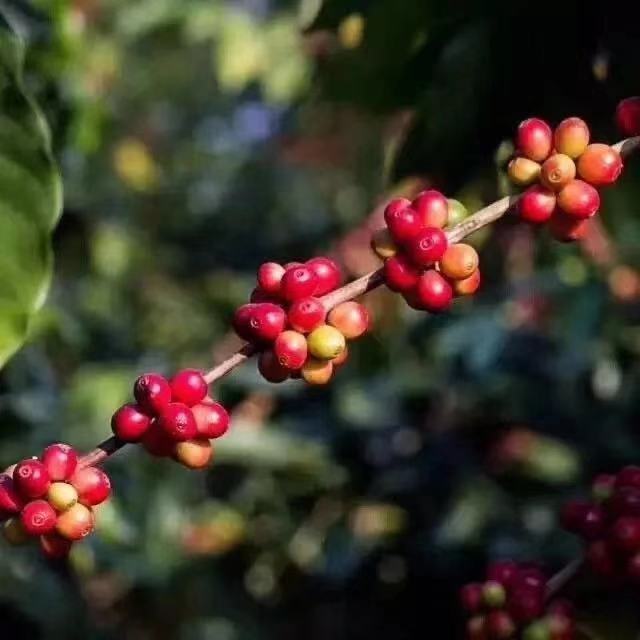
The so-called Yega Chuefei flavor, refers to the rich citrus lemon acid, rich jasmine aroma, light and elegant taste, with a sense of tea, tastes like fresh and clean lemon tea.
Especially in summer, the Yega Xuefei cold bubble bag launched in Qianjie is very popular. under the extraction of low temperature for a long time, the taste of coffee is enhanced, and the sense of juice and tea is more integrated at the same time.
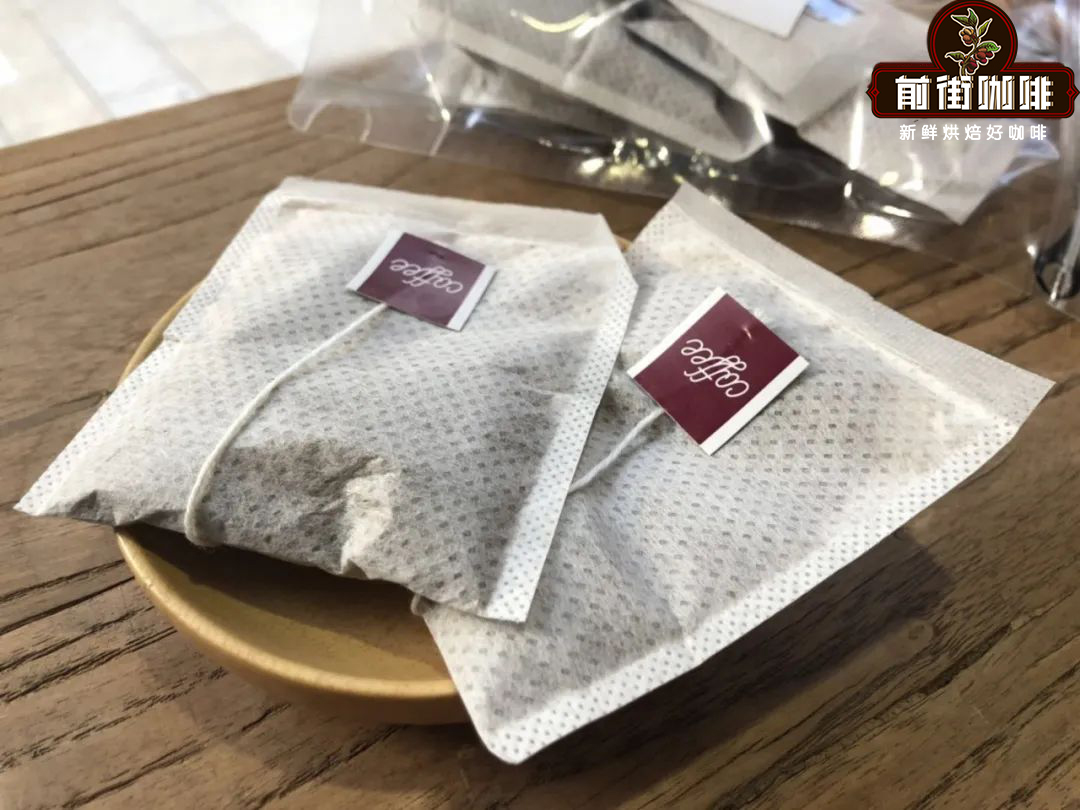
Traditionally, Yejia Xuefei used the oldest method of sun treatment, but because most of the early sun-dried coffee beans were dried on the flat ground, they were inevitably contaminated with miscellaneous smells such as soil flavor and dust, coupled with the lack of reasonable screening, the quality of sun-dried beans was average. In 1972, Ethiopia introduced Central and South American washing technology to improve the quality of coffee, which made the jasmine and citrus lemon aromas of Yega Xuefei clearer and brighter, making it one of the representatives of fine coffee in the world.
Compared with the sun method, the water washing method is better to control the quality of coffee beans, which mainly lies in washing the coffee to slow down the "fermentation" process, and because a large amount of water is needed, water washing treatment is rarely seen in countries that lack water resources.
Qianjie is considering that washing treatment will better reflect the cleanliness of coffee taste and pure flavor, so when analyzing the specific flavor of a coffee producing area, it will take the washed beans in that area as a reference. If the guests have not drunk Yejia Xuefei, Qianjie will also give priority to the water-washed Yejia Xuefei, which will help to form the understanding of the flavor of the producing area, and then try the Yejia Xuefei, which is treated by tanning, honey treatment and so on. can have a direction of comparison.
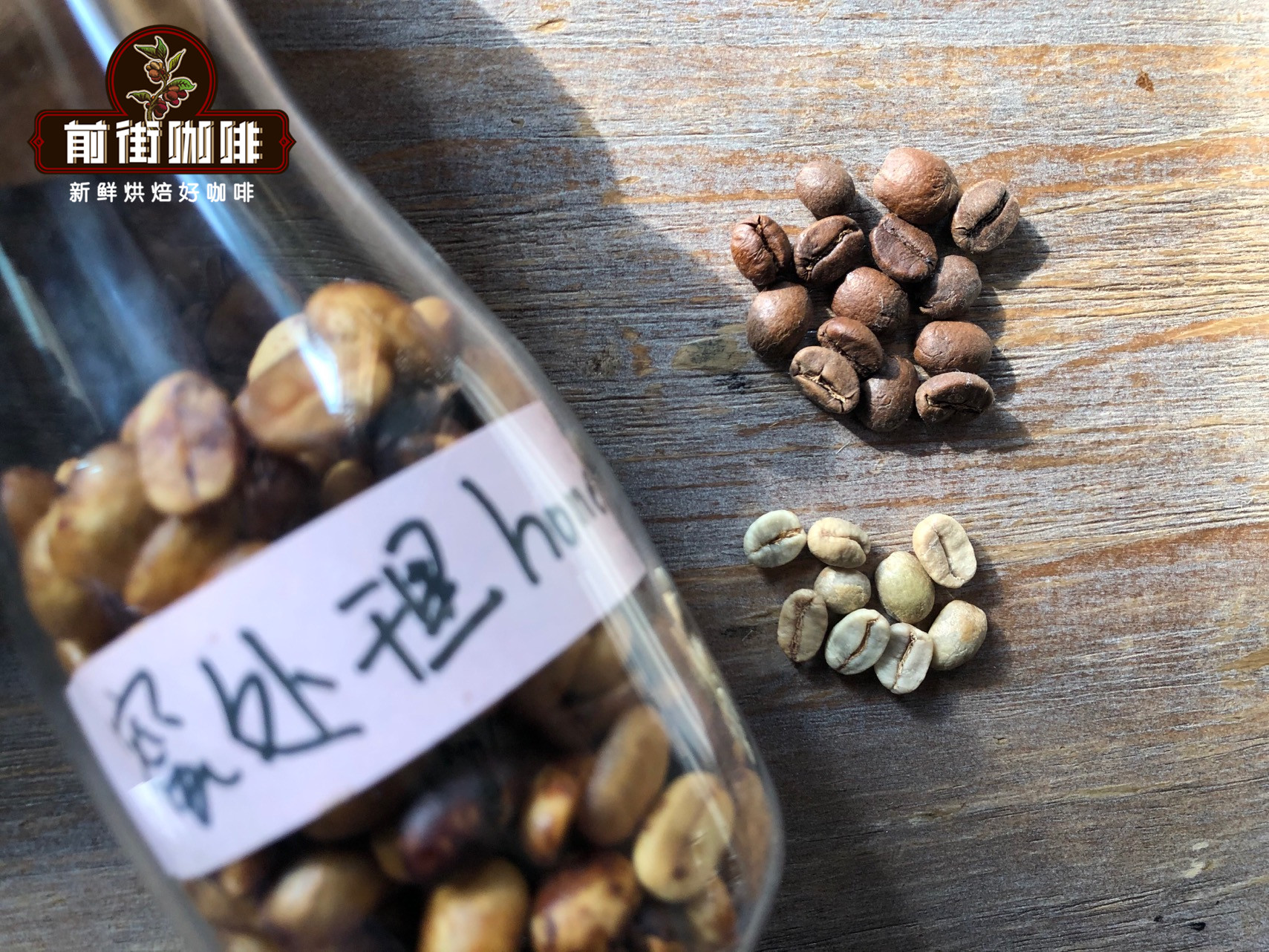
The process of washing treatment
1. Choose beans: put the harvested fruit in a large tank, the ripe fruit will sink, and the immature or overripe fruit will float on the surface.
two。 Remove the pulp: use a machine to remove the peel and pulp, leaving only coffee beans coated with pectin. The process of washing is to wash this layer of pectin.
3. Fermentation: pectin has strong adhesion and is not easy to remove. It must be placed in a tank for about 18-36 hours and fermented and decomposed by microorganisms.
4. Washing: put the fermented beans into the pool and wash them back and forth, using the friction force between the beans and the water to wash the coffee beans.
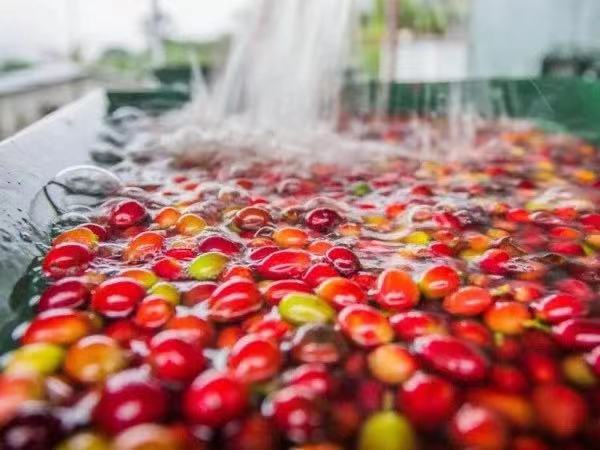
5. Drying: after washing, the moisture content of coffee beans reaches 50%, which must be dried so that its moisture content is reduced to 12%, otherwise it will become moldy and corrupt due to high moisture content. The best treatment is to use sunlight to dry, although it takes 1-3 weeks, but the flavor is good. In some places, machines are used to dry, greatly shortening the processing time, but the flavor is relatively inferior to that of sun-dried coffee beans.
6. Shelling: after the dried coffee beans are stored in the warehouse for a week (to stabilize the moisture content), they are handed over to the factory for shelling and sheep skin removal.
7. Selection and grading: remove defective beans, ensure better quality, and then give them to exporters to sell all over the world.
Yejia Xuefei coffee variety is a local native species, small granule species, the appearance is more round, the bean body is very small, mostly between 14 and 15 orders. The emergence of the word "native species" occurred after the start of the boutique coffee movement. At that time, buyers of boutique coffee, which could not tell the difference between Tibica and bourbon, would collectively refer to all these unknown varieties as native species. In addition, there are too many varieties of coffee in Ethiopia, just like the natural gene bank in Arabica. On the one hand, there are many varieties, and it is difficult to identify and classify them. On the other hand, the Ethiopian government is unwilling and unable to disclose these varieties information for the sake of protection.
[Qianjie Brazilian red fruit]
Country: Brazil
Producing area: South Minas
Altitude: 1000 m
Variety: red bourbon
Treatment: half-sun
Flavor: nuts, chocolate, cream, peanuts, caramel
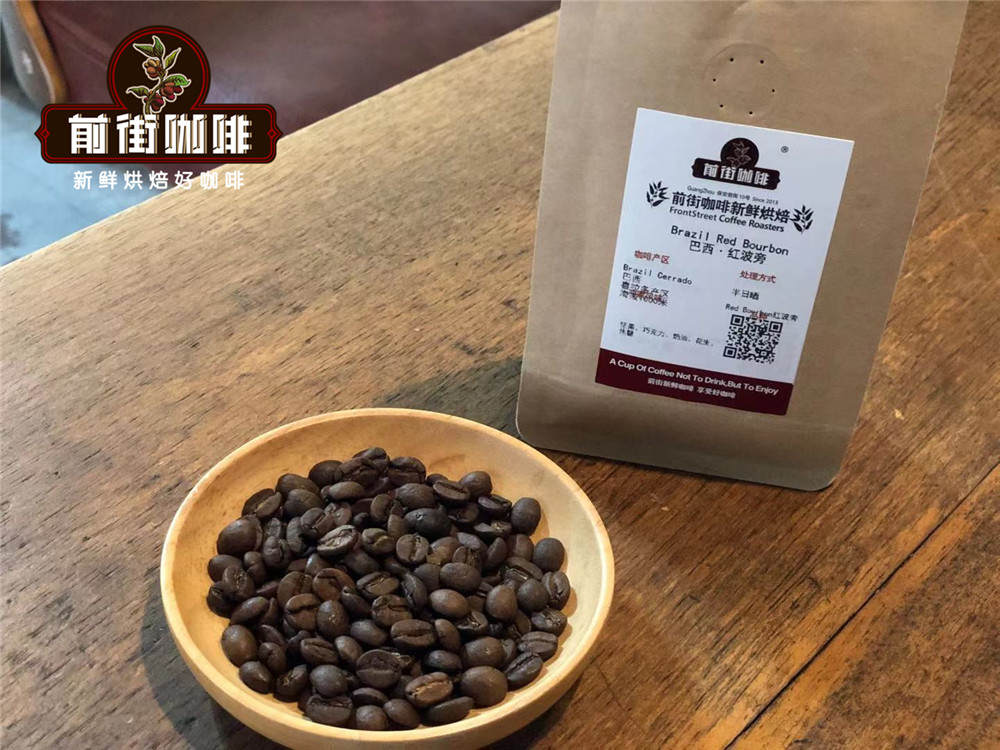
Brazilian coffee beans were introduced from French Guiana (a country in northern South America) in 1720. Brazil was then a colony of Portugal, while many of the other South American countries were colonies of Spain, so most of the countries in South America spoke Spanish, while Brazil spoke Portuguese.
In order to introduce Guyanese coffee beans to Brazil (which was severely prohibited from other countries at the time), Portuguese officers stationed in Brazil captured the heart of the Guyanese governor's wife and succeeded in bringing coffee seeds to Brazil. Since then, coffee has adapted quickly in Brazil, spreading from the north to the southeastern state of Sao Paulo, and by 1845, Brazilian beans accounted for 45% of the world's coffee beans. At present, Brazil is the largest coffee exporter in the world.
Qianjie Coffee includes Brazil not only in the rations bean series, but also in the season hanging ear coffee series, which shows that Brazil, as a coffee producer, is indispensable in the classic coffee flavor.
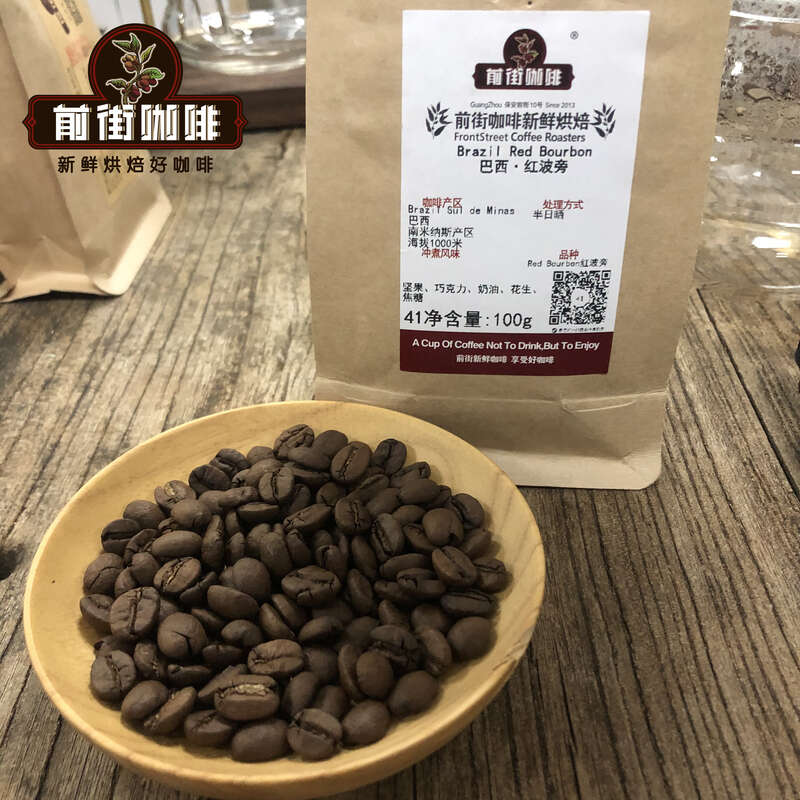
Coffee beans grown in Brazil include Arabica coffee beans and Robusta coffee beans, of which Arabica boutique coffee beans are mainly grown in the states of Sao Paulo and Minas Gerais. Robusta coffee beans are mainly distributed in Espiritu Santo, Bahia, Langdonia and other states.
The "Brazilian rations beans" in Qianjie comes from Minas Gerais, the representative coffee producing areas of Minas Gerais are Syrador and South Minas, both of which are at higher elevations. Hirado is located in the west of Minas Gerais, a flat plateau at 750m-1200m above sea level. South Minas is a hilly woodland in 700m-1200m above sea level. Since 1999, South Minas has won the most manors in Brazil's Outstanding Cup bidding.
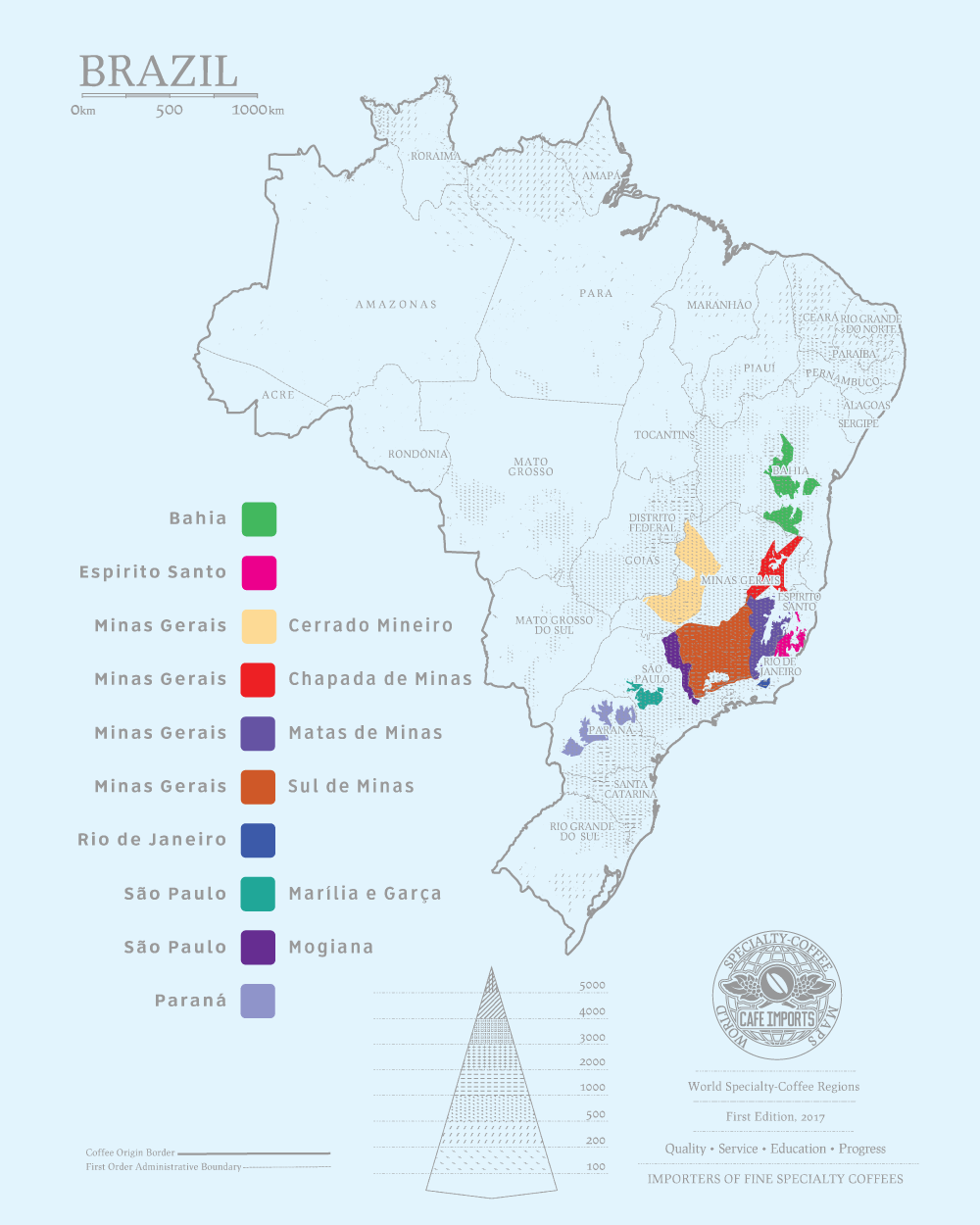
Bourbon coffee variety is the second species caused by the mutation of Tippica coffee variety. Generally speaking, when it comes to bourbon coffee varieties, it will default to red bourbon coffee varieties, because its mature color is red.
Before 1990, Brazil almost adopted rough sunbathing. This is the culprit that makes Brazilian beans easy to catch the smell of sour and rotten wood, because during the 2-3 weeks of exposure, the coffee fruit will become moldy and smell when the rain returns to the tide or the fruit is cracked. This problem has long been criticized and dealt a heavy blow to the image of Brazilian coffee. After 1990, according to the characteristics of dry climate in Brazil, Brazilian research units developed half-sun method to shorten the treatment time. Half-sun treatment, after screening the suitable coffee fruit, remove the peel, pulp and part of pectin, expose it with a small amount of pectin for 1-3 days, and then dry it with a machine until the moisture content is 12%, then put it into a storage container for ripening. This treatment can reduce the bad flavor of Brazilian beans and enhance the aroma and sweetness of Brazilian beans.
[front Street Columbia Huilan]
Country: Colombia
Producing area: Huilan
Altitude: 1500-1800 m
Variety: Kaddura
Treatment: washing treatment
Flavor: nuts, dark chocolate, caramel, soft fruit acid
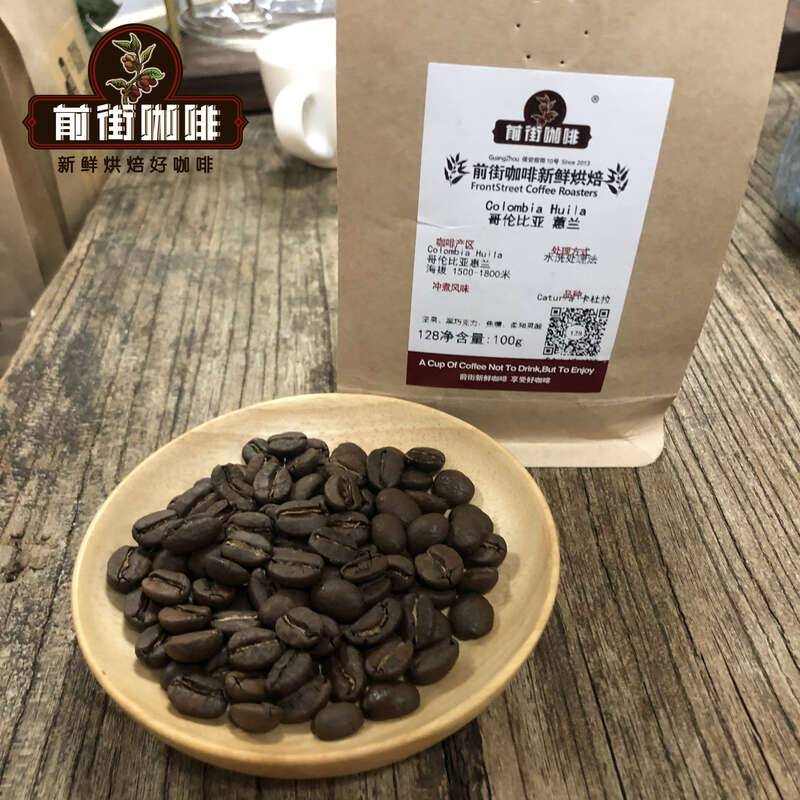
Colombia is now the third largest coffee producer and exporter in the world. Colombian coffee is famous for its soft taste and rich nutty chocolate flavor.
Huilan area belongs to the mountain terrain, and coffee is planted on the slopes of the canyon, so it has a high altitude and suitable temperature for growing high-quality Arabica beans. The climate of the canyon slope not only prevents the cold wind from blowing in, but also keeps the mountain breeze cool without high temperature, and Rain Water is also relatively abundant, which can be said to be a unique place for coffee cultivation. Colombian coffee workers go up the mountain to pick coffee beans by hand, and most of the coffee beans are washed.
Huilan coffee beans have a full taste and heavy texture. It has nutty, chocolate, caramel and other aromas and supple pleasant acidity.
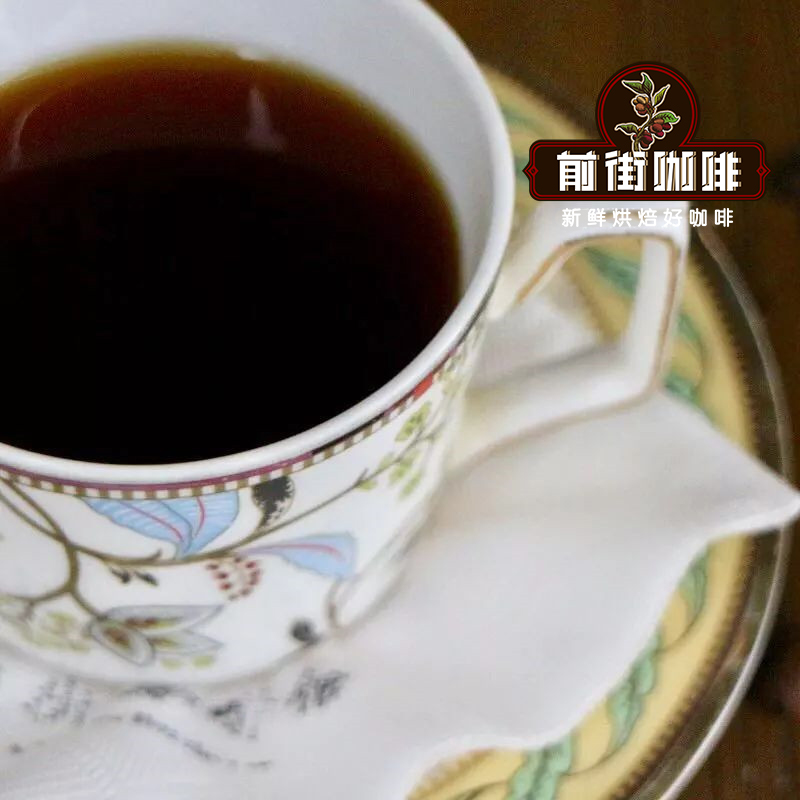
Kaddura, a natural variety of Arabica Bourbon, was discovered in Brazil in 1937. Its tree is not as tall as bourbon and smaller. Due to inheriting the blood of bourbon, the resistance is weak, but the yield is higher than that of bourbon. Although found in Brazil, Kaddura is not suitable for growing in Brazil, so it is not planted on a large scale in Brazil, but is popular in Central and South America, such as Colombia, Costa Rica and Nicaragua. Kaddura is planted on a large scale.
[Qianjie Manning, Indonesia]
Country: Indonesia
Producing area: Lindong, Sumatra
Altitude: 1100-1600 m
Variety: iron pickup, Kaddura
Treatment method: wet planing method
Flavor: baked toast, nuts, caramel, pine, herbs
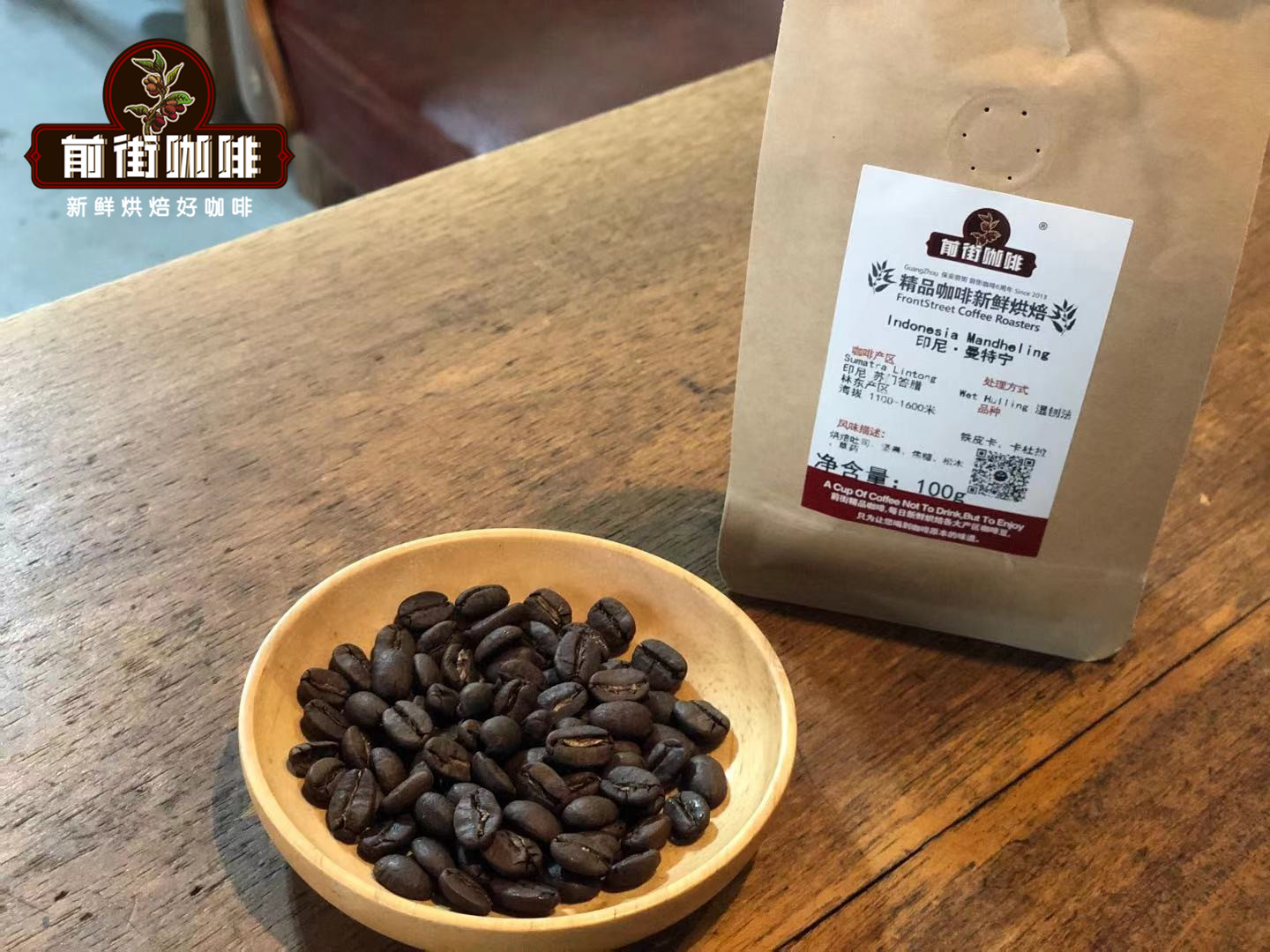
Manning originally referred to a tribal name in Indonesia. When Japanese soldiers returned to Japan after colonization in Indonesia, they were obsessed with the local delicious coffee, so with the help of trading friends, they asked the locals to help collect high-quality coffee beans, including this Mantenin. The Japanese are very fond of this coffee bean, so they ask the name, because the commercial source is not convenient to disclose, the local people casually said "Mantenin", so "Mantenin" was mistakenly hit into the name of the coffee bean.
Mantning mostly uses Sumatra's unique coffee bean treatment, the wet planing method. As the local weather is often dominated by Rain Water, with continuous typhoons, it is unable to achieve the good weather needed for the sun, and the local economy is not good, so it is also impossible to use the more expensive way of washing, thus giving rise to the wet planing method with local characteristics.
In the first stage, the peel and pulp were removed by a wooden peeling machine, and after fermentation for 3 hours, the moisture content was reduced to 30-50% of semi-dry and semi-wet.
In the second stage, the pectin and sheep skin were removed and the latter part of the drying process took 2-4 days, and the moisture content was reduced to 12-13%.
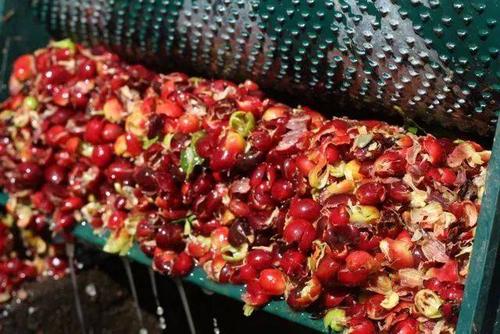
Kadura is a natural variety of bourbon, the tree is not as tall as bourbon, easy to harvest. Yield and disease resistance are better than bourbon. Flavors often have refreshing fruity acidity and a touch of sweetness.
The top leaves of iron pickup are red copper, called red top coffee. Due to the low yield and difficult cultivation, the price is much higher than ordinary small coffee. However, its taste performance is excellent and it is recognized as a fine coffee variety.
[Front Street Costa Rica Tala Pearl]
Country: Costa Rica Fiscal year: 2003
Production area: Tara Pearl
Altitude: 1500 m
Breeds: Kadura, Kaduai
Treatment method: washing treatment
Flavor: Orange, honey, toffee, nuts
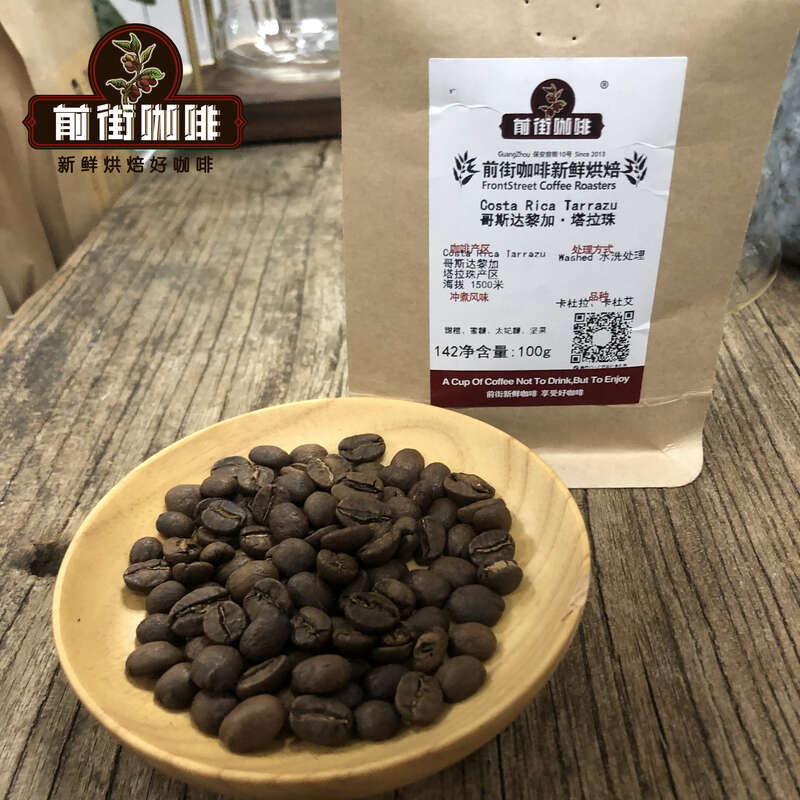
Costa Rican coffee is famous for its balanced flavor, rich chocolate and smooth taste. Tarazu, located in the south of the capital SanJose, is one of the most valued coffee growers in Costa Rica. Tarazhu coffee beans are full-grained, full-bodied BODY, smooth taste, rich chocolate and nutty aromas, moderate acidity and attractive aromas.
Kaddura, a natural variety of Arabica Bourbon, was discovered in Brazil in 1937. Its tree is not as tall as bourbon and smaller. Due to inheriting the blood of bourbon, the resistance is weak, but the yield is higher than that of bourbon. Although found in Brazil, Kaddura is not suitable for growing in Brazil, so it is not planted on a large scale in Brazil, but is popular in Central and South America, such as Colombia, Costa Rica and Nicaragua. Kaddura is planted on a large scale.
Kaduai is a hybrid of New World and Kaddura. It not only inherits the advantage of the low body of Kaddura tree, but also makes up for the defect of Kaddura's weak fruit without the wind. The result is solid and not easy to fall when the strong wind blows. The biggest regret is that its overall flavor is slightly more monotonous than Kadura. Kaduai also has the difference between red fruit and yellow fruit, and red fruit has a better flavor than yellow fruit. Kaduai, Kaddura, New World and bourbon are the four main varieties of coffee in Brazil.
[front street Guatemala Vivette Nanguo]
Country: Guatemala
Producing area: Vivette Nanguo
Altitude: 1500-2000 m
Varieties: bourbon, Kaddura, Kaduai
Treatment: washing treatment
Flavor: nuts, lemon peel, berries, citrus
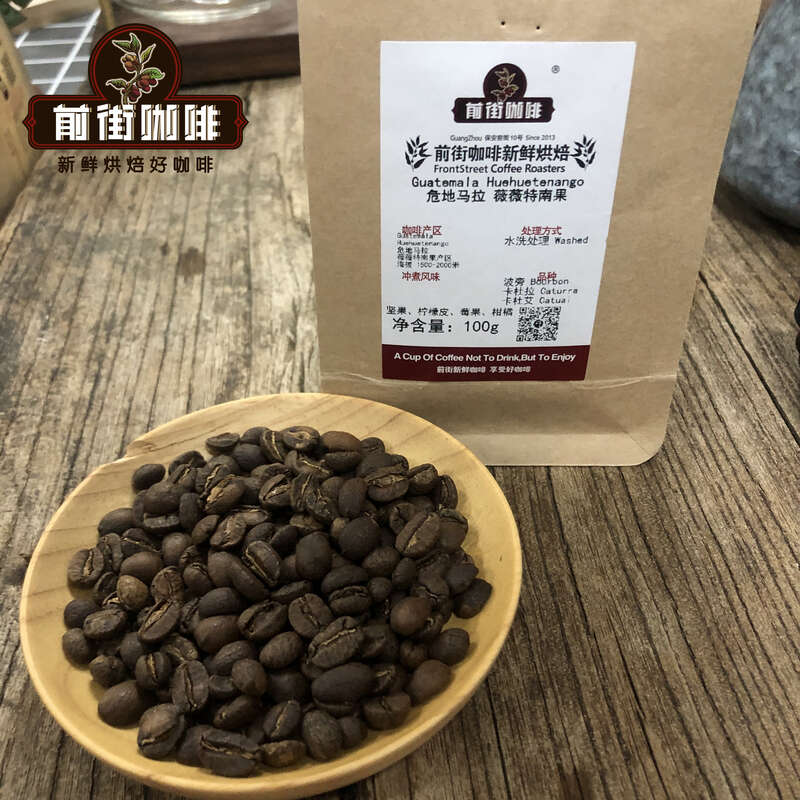
The average elevation of Guatemala is high, and the coffee belt is distributed over 1500 meters, which is the easiest to grow extremely hard beans. The coffee produced in Guatemala has a special smoky flavor and rich fruit juice taste. Guatemala has a total of eight major producing areas, divided into five volcanic producing areas and three non-volcanic producing areas. Vivette south fruit producing area is one of the three major non-volcanic producing areas.
The treatment in Guatemala is mainly water washing and a small amount of sun exposure. Qianjie coffee is often asked by guests, what's the difference between washing and sunbathing, even coffee beans from the same manor in the same producing area are washed and sunburned separately. In fact, friends who often buy Qianjie coffee rations beans will find that most Qianjie coffee rations beans are treated with water, because the water washing method can present the basic flavor of a producing area, and it is also the beginning of the understanding of the flavor of the producing area. The rule of sun treatment is to add sweet aroma and fermented feeling to this basic flavor.
[Qianjie Yunnan Xiaogi]
Country: China
Producing area: Baoshan, Yunnan
Altitude: 1200 m
Variety: Katim
Treatment: washing treatment
Flavor: melon, melon, brown sugar, plum acid, black tea feeling
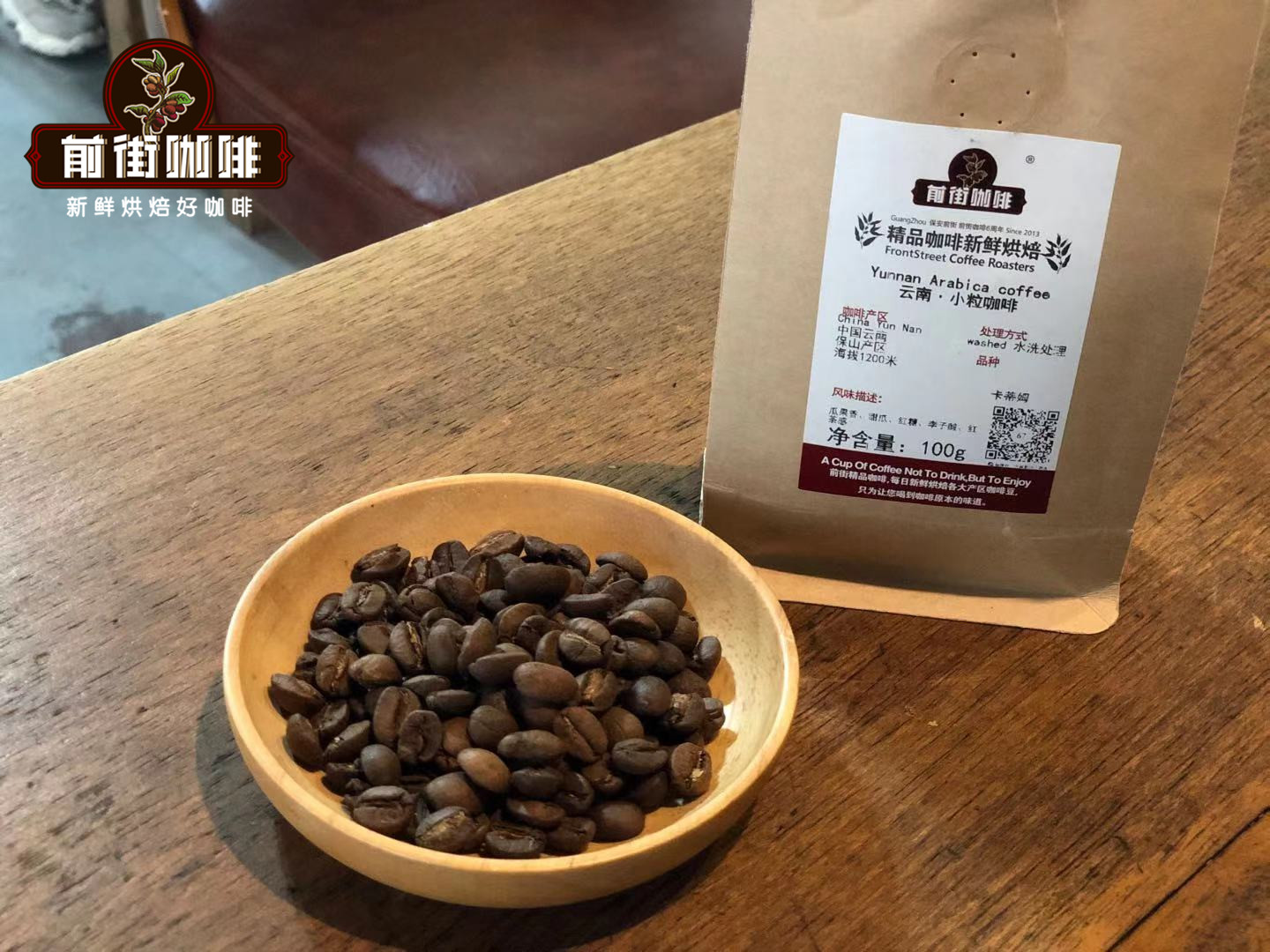
In the front street coffee, you can find two kinds of Yunnan coffee beans; one is a washed tin card, the other is Katim. In Qianjie coffee, Yunnan iron pickup is labeled as Yunnan boutique coffee, while Yunnan Katim is labeled Yunnan small-grain coffee according to the market custom.
These two beans Qianjie coffee will be roasted to medium roast, because Yunnan is not a sour producing area, their flavor is more balanced, the tone is nutty, brown sugar flavor. Qianjie Coffee chooses medium roasting to show the balance, sweetness of nuts, brown sugar and soft acidity of Yunnan coffee.
When talking about Yunnan coffee beans, there are often two sentences that can put an end to the discussion about varieties. One is that "Yunnan coffee beans are also good after the efforts of farmers and the improvement of technical level." second, "Yunnan beans are good." these two sentences have become classic comments on Yunnan coffee. Yunnan Xiaomi was originally named after the iron pickup, because the tin pickup is the Arabica small seed, but with the passage of time, the low yield of the tin card variety has been replaced by Katim, and the name of small grain coffee has also been inherited by Katim.

In 1959, the Portuguese moved the Brazilian bourbon mutant Kaddura to East Timor to mix with Tim timor, who was of Robusta descent, and succeeded in breeding a disease-resistant and highly productive Katim. As leaf rust affects coffee-producing countries around the world, with the help of international organizations, countries vigorously promote Katim to fight leaf rust and increase production capacity.
Thus it can be seen that Katim contains Robusta blood, which can be distinguished from the pure Arabica tin truck in flavor. In the domestic Yunnan raw bean competition, Katim won the top 10 gold list, but the quality of the undisputed Arabica variety can not be seen, because there are so few people, which gives people the impression that Katim in Yunnan should not be underestimated.
Qianjie Coffee in Yunnan plantations, mainly grow iron pickup and a small amount of bourbon. Katim and Tieka originally did not conflict, one is mass production, the other is fine, the existence of high-quality goods is to improve quality, the significance of mass production is to increase output, while Yunnan will choose Katim as the main, but also see the purpose behind.
For more boutique coffee beans, please add private Qianjie coffee on Wechat. WeChat account: kaixinguoguo0925
Important Notice :
前街咖啡 FrontStreet Coffee has moved to new addredd:
FrontStreet Coffee Address: 315,Donghua East Road,GuangZhou
Tel:020 38364473
- Prev
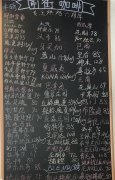
Is the coffee bean of Guangzhou Qianjie coffee good? The coffee beans of front street coffee are recommended by the delicious coffee beans.
After understanding the basic context of coffee, everyone can easily choose their own coffee beans. Coffee is a drink, and its standard is personal preference, whether you like the mellow blue mountains, the light acid of Africa, or the Panamanian flavors of flower, fruit and tea. In terms of the raw materials used, coffee is the agricultural product used by every producing country, each
- Next
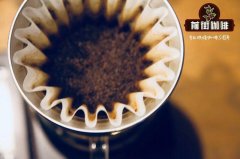
How fine is the grinding degree of the hand punch? How does the grindness of the hand affect the flavor of the coffee?
Professional coffee knowledge exchange more coffee bean information please follow coffee workshop (Wechat official account cafe_style) Qianjie coffee today talk about how fine coffee powder needs to be ground to achieve perfect extraction? Grinding beans is the first step of handmade coffee, but it is also a step that many people are easy to fail, either too fine or too thick, which indirectly affects the taste of cooking, if you want accurate palms.
Related
- What documents do you need to go through to open a coffee shop? coffee shop coffee shop certificate processing process
- How to purchase Coffee beans in small Cafe how to choose a suitable supplier for domestic Coffee supply Company
- How to drink Starbucks Fragrance White Coffee? how to make Australian White Coffee? what Italian coffee beans are recommended?
- The Story of Flora Coffee: the name of Flora Coffee Bean and the implication of the Flowers on Florna Coffee
- How much does a cup of coffee cost? How much is the profit of a cup of coffee? What is the profit of the coffee shop in a year?
- Yunnan small Coffee, known as "fragrant Coffee", introduces the characteristics of Alpine Arabica Coffee producing areas in Yunnan, China
- 2023 latest Starbucks full menu price list how much is a cup of Starbucks coffee what is better to drink the most popular hot and cold drinks recommended
- Starbucks different kinds of Coffee Price list Starbucks menu 2023 Top Ten Best drinks in Starbucks
- Starbucks Spring praise Comprehensive matching Coffee Bean theme Story Packaging implication and taste description
- The cost of a cup of coffee latte American coffee cost price and selling price

